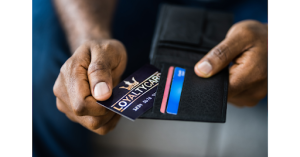People become brand ambassadors of companies they really adore. There must be a reason for these brands to create an army of brand advocates. The simple answer is that these brands create high value products and services. Values are not simply confined to the price. It goes beyond customer experience. In this blog,we will understand how to create value for customers with these simple suggestions. .
What is Defined as a Brand Advocate?
A brand advocate is a customer or individual who actively promotes and supports a brand, product, or service. These advocates are typically loyal and enthusiastic buyers who have had positive experiences with the brand and are willing to share their experiences with others. Brand advocates are important in building a brand’s reputation and driving word of mouth marketing
Provide Value To Customer: Tips
Here are some points that can help organisations develop value propositions via different strategies.
Capture customer pain points
Understand your customers’ pain points to provide value. Gather and analyze customer feedback to identify issues in their journey. Tailor solutions to meet their needs, improving the overall experience and giving you a competitive edge. Target potential customers’ pain points by implementing their feedback into your strategy to attract new customers. Listening to customers is crucial for retention and long term success.
Tailor strategies for market segments
Market segmentation is a strategic move for organizations. It identifies and targets specific customer groups with bespoke products and services. Align organizational functions towards this goal. A synchronized approach eliminates departmental contradictions and brings forth successful marketing strategies. This increases customer satisfaction and loyalty. Aligned organizations save costs by eliminating product overlaps and focusing on delivering unique value.

Deliver high value products consistently
Successful business strategies prioritize quality over lower prices. Focus on delivering highvalue products that meet specific needs to create a loyal customer base and achieve longterm success. This approach generates positive feedback, retains customers, and builds a strong brand image. By prioritizing quality, businesses gain a competitive advantage and prioritize customer satisfaction over shortterm gains.
Do regular SWOT analysis of the market
SWOT analysis consists of strengths, weaknesses, opportunities and threats. Creating a SWOT structure in your research can enable you to create a well defined value proposition that resonates with your target market. Create marketing strategies that cater specifically to your potential customers’ pain points. Assess competitors strategies and create internal changes while retaining loyal customers.
Empower customers with information
Offering educational resources like tutorials, webinars or email campaigns can help build trust with potential customers and retain loyal ones. Provide valuable information to potential customers through personalized content on social media, website help section, video tutorials and product demonstrations. Most people also prefer self service options. So it is necessary to cater to both kinds of customers- one who might need assistance and the other who are self-reliant.

Capture reviews at all touch points
People like it when their preferred brands are active across channels. On any given day, people are scrolling across multiple platforms. They reach out via website chatbots or on social media channels. Creating an omnichannel listening system can help you capture word-of-mouth conversations. Use these insights to share omnichannel surveys and offer instant resolution to unhappy customers. Close the feedback loop at the earliest. .
Form an online community
Create an online community to develop a successful business strategy that is focused on customer value creation. In this community, users discuss product value, offerings, and how they use the product in their lives. They also solve common issues together.
Use social media platforms like Facebook and Reddit to build this community. Newsletter email campaigns also help in forming strong relationships with stakeholders. These strategies foster a sense of belonging and engagement among your customers.

Customer survey rewards and incentives
Loyalty programs and incentives are a great way to tell your consumers that their patronage with the organisation is an important part of the brand. This encourages customers to repeat purchases, provide positive online testimonials, promote wordofmouth offering and become loyal consumers. However while providing incentives, it is important to consider if the reward will be appropriate for the audience and keep the incentive aligned to the product offerings.Even when there is no active incentive, showing gratitude to your consumer base can go a long way in building a positive relationship.
How Can Brand Loyalty Boost Your Business?
Sure! Here are some key ways in which brand loyalty can boost your business, along with brief explanations for each:
1. Increased customer retention
Loyal customers are more likely to return to your brand repeatedly. This brings a steady stream of revenue. Retaining customers is often cheaper than acquiring new ones.
2. Higher Customer Lifetime Value (CLV)
Loyal customers tend to spend more over time. Their long term commitment increases their overall value to your business.
3. Positive word-of-mouth and referrals
Satisfied, loyal customers are likely to recommend your brand to friends and family. You get free and credible marketing that can attract new customers.
4. Competitive advantage
A strong base of loyal customers can differentiate your brand in the marketplace. This makes it harder for competitors to lure your customers away with promotions or discounts.
5. Cost efficiency in marketing
Marketing to existing loyal customers can be more cost effective than targeting new customers, as they are already familiar with and trust your brand.
6. Customer feedback and improvement
Loyal customers are often more engaged and willing to provide valuable feedback. This can help you improve products or services giving you greater scores on customer satisfaction metrics.

7. Increased sales through up-selling and cross-selling
Loyal customers are more likely to purchase additional products or services, leading to increased sales without the need for aggressive marketing.
8. Brand advocacy and ambassadorship
Loyal customers can become brand advocates or ambassadors. They actively promote your brand on social media and other platforms. In return, brands get increasing online visibility and reputation.
9. Stability during market fluctuations
A loyal customer base provides stability during economic downturns or market fluctuations. These customers are more likely to stick with your brand despite external pressures.
10. Premium pricing power
Strong brand loyalty can justify premium pricing. Loyal customers may be willing to pay more for the perceived added value and trust in your brand.
Conclusion
To sum up, customer value is the foundation of business success. It is essential to align your organization’s values and goals with customer needs and expectations, which can be achieved through market research, effective communication, and a focus on quality over price. By doing so, you can create loyal customers who will provide positive feedback, help build a strong brand image, and drive both internal and external growth.
To map your customer journey and gain insights at superfast speed, sign up for our 14 day free trial here. You can also test our AI Survey Builder here and create instant customer feedback surveys.

